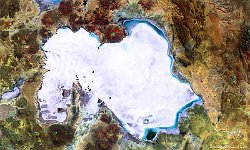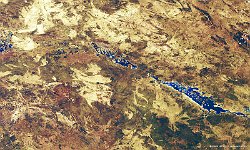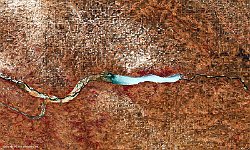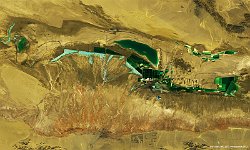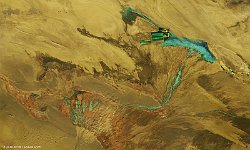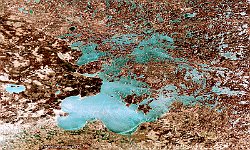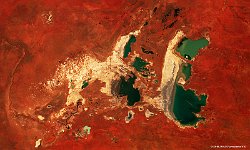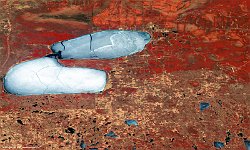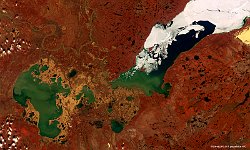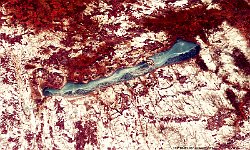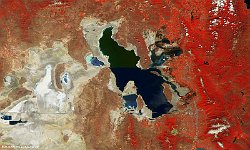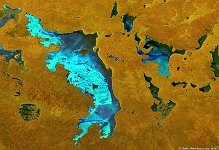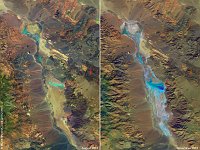12 / 52
Dabuxun Lake, China
The 100 m false-colour image of 16 February 2017 shows us Dabuxun Lake in China, a strangely eye-catching mine, where water evaporates to leave behind thick layers of mineral salts. While humans are exploiting it now as a natural resource, the lake may be the final remnant of an ancient salt lake lingering in the area for the last two million years.
Dabuxun is part of Lake Qarhan, the largest salt lake in China. Qarhan is a 2,261 square mile basin that only intermittently fills with water. The playa includes nine smaller lakes, where Dabuxun is the largest. Water dissolves nearby rocks, concentrating minerals in a solution. The brine then evaporates from the lakes, leaving behind mineral salts like sodium chloride (rock salt), potassium (potash), bromine, halite, gypsum, and magnesium chloride. Humans help this natural process along by building square evaporation ponds. The extracted minerals are used in industry. Sodium chloride is purified into table salt, while potassium is a key ingredient in fertilizer.
Date: 16/02/2017
Resolution: 100m
